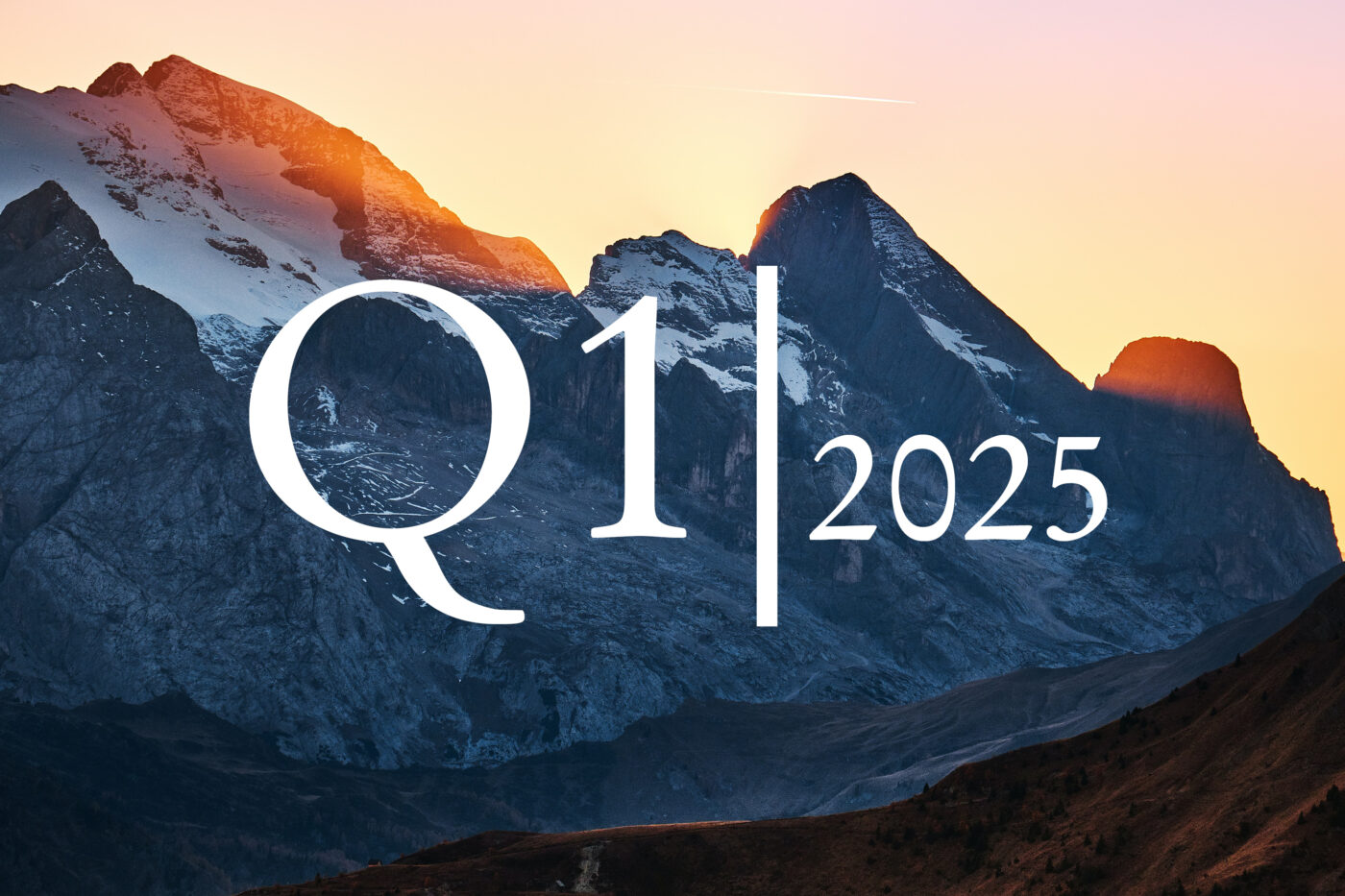In a nutshell
In 2023, growth is likely to move into the focus of the markets. Risks lurk here and growth is likely to weaken further initially. In the event of disappointments, there could be a temporary counter-run in government bonds and equities.
Investor sentiment and positioning remain pessimistic. This offers potential for a further limited recovery in equities. However, a significant valuation expansion is unlikely and expectations for corporate earnings still seem clearly too high.
Bonds and commodities offer attractive alternatives, so that too strong a focus on equities does not seem appropriate.
Portfolio positioning at a glance
We were slightly optimistic for the fourth quarter and had closed our moderate underweight in equities after the sell-off in September. However, we did not chase the strong performance in the fourth quarter. On the contrary, we made several small sales to ensure that the equity risk did not become too great due to the positive performance. We reduced our weighting in the US in particular.
In bonds, we increased our overweight outside of safe government bonds in the fourth quarter, at the expense of the cash position and also gold. In addition, we have reduced gold somewhat in favour of industrial metals, but remain significantly overweight. We have also reduced our US dollar exposure. The US dollar has probably passed its high point. A moderate weakening of the US dollar in 2023 would benefit the emerging markets in particular. In terms of equities, we prefer Europe and the emerging markets to the US and have already increased our weighting in small and mid-caps in view of an economic recovery later in 2023. We continue to favour gold and other commodities, especially industrial metals, over government bonds. We are overweight in corporate and emerging market bonds.
Berenberg Asset Allocation
Review – bottoming out in the second half of 2022
The fourth quarter brought what the markets had been waiting for for a long time: lower-than-expected inflation in the US. This fuelled hopes that the inflation peak there had already been passed and that the central banks would no longer have to put the brakes on so hard. The US Fed fuelled this hope by discussing a reduced pace of further interest rate steps. With regard to China, the mood alternated between hopes of an opening and new fears of a slowdown. Global equity markets recovered significantly from the lows at the end of September/beginning of October – especially European equities. From mid-October, with somewhat weaker economic data, bond yields also fell from their highs. The environment of positive correlation between equities and bonds thus remained intact. The overvalued US dollar weakened significantly. The upward trend here seems to have been broken. Gold traded almost unchanged in euro terms in the fourth quarter and oil fell, while industrial metals increased significantly.
Economic outlook - change of focus from inflation to growth
Overcoming the inflation summit, an end to interest rate hikes and likely even interest rate cuts in the US in the second half of 2023, a significant recovery of the eurozone economy from recession from spring onwards, only a mild recession in the US, the easing of COVID-19 restrictions in China and possibly also an easing of the situation in Ukraine in the course of the year – the economic environment forecast by our economists does not seem so bad for the financial markets in 2023.
However, the economy is likely to weaken initially before things improve again, and the focus of the markets is likely to switch from inflation to growth. Equities and government bonds could thus temporarily move in opposite directions again and a diversification effect could return. Nevertheless, risks lurk in the growth of the economy as well as in the expected earnings for 2023. We consider profit expectations too optimistic – with increasing pressure on margins, profits are unlikely to rise. And the risks remain manifold, from new geopolitical conflicts to credit events in the face of higher financing costs and weaker growth, to inflation that is too stubborn and/or a much harder landing for the economy after all. Moreover, even after the end of the interest rate hikes, there is still the threat of burdens from the withdrawal of liquidity through quantitative tightening in the US and the eurozone. 2023 is thus likely to be a better year on the financial markets, but not an easy one, and also a very path-dependent one. For example, the answer to the question “Which comes first, the Fed pivot or China’s complete opening up from COVID-19 restrictions?” could make a significant difference to markets. But even if the acute problems are overcome, an environment comparable to that of the past decades is by no means to be expected thereafter. There were already increasing signs of this in 2022.
Equities recovery in Q4, especially in Europe; US dollar in retreat; commodities remain the year's winners, bonds the losers
Turn of the times and reorganisation - many things are different in the medium term
Disinflation and deflation fears gave way to high inflation, to levels not seen for more than 40 years. The primary goal of central banks is no longer to support the economy and financial markets but to fight inflation, even if this brings dangers for the economy and markets. The example of the UK has shown that financial markets are critical of massive increases in government debt. The unipolar, US-focused world order is changing with deglobalisation, Russia's war of aggression on Ukraine and the decision of the G7 and the EU to freeze the currency reserves of the Russian central bank into a multipolar world order in which many countries do not want to be closely tied to only one major partner. The development of new supply chains, the infrastructure for mobility and energy supply, and the energy turnaround require strong investments and necessitate a race for scarce raw materials. This distinguishes the current situation from comparable situations in the past, where excesses in the real economy had to be compensated for in a recession. In contrast, we recently experienced an exogenous shock and we have to invest to leave the shock behind. This offers opportunities. However, deglobalisation, the energy transition and the persistent supply bottlenecks in raw materials and labour (demographics) in the medium term are likely to ensure that inflation picks up again quickly with a recovery in growth, which should then again quickly call the central banks into action. The results are shorter, stronger and more erratic inflation and economic cycles and thus increased planning uncertainty. This weighs on valuations, as investors justifiably demand a higher risk premium. Investors should therefore not hope for a rapid, sustained expansion in equity valuations. Even if we see recovery potential for equities in 2023, given low investor positioning and widespread pessimism, the potential remains limited.
After bad years for multi-asset portfolios, good ones often follow!
Only a small share of all asset classes (segments, regions...) generated a posi-tive return in 2022. Historically, this usually changed in the following year.
Still potential through low equity position of systematic Strategies
As realised volatility declines, systematic investment strategies (e.g. with target volatility or risk parity) are likely to increase their risk position again.
Alternatives in bonds, commodities and emerging markets
For the first time in 14 years, the yields of high-quality corporate bonds clearly exceed the dividend yields of equities (lower figure). Many bond segments, such as subordinated bonds, already offer such a high current yield that they are expected to deliver a positive return in 2023 even if interest rates/spreads rise slightly. Moreover, unlike many government bonds, yields on corporate and emerging market bonds should more than compensate for higher inflation on average in the medium term. Commodities, especially industrial metals, remain clear beneficiaries of the changed environment, and emerging markets such as India, Indonesia and Latin America should also benefit.
Bye-bye "TINA" - There are alternatives to equities again
Bonds, especially corporate bonds, are more attractive compared to equities than they have been since the financial market crisis 14 years ago.
Author

Prof. Dr. Bernd Meyer
Prof. Dr. Bernd Meyer has been Chief Investment Strategist at Berenberg Wealth and Asset Management since October 2017, where he is responsible for discretionary multi-asset strategies and wealth management mandates. Prof. Dr. Meyer was initially Head of European Equity Strategy at Deutsche Bank in Frankfurt and London and, from 2010, Head of Global Cross Asset Strategy Research at Commerzbank. In this role Prof. Dr. Meyer has received several awards. In the renowned Extel Survey from 2013 to 2017, he and his team ranked among the top three multi-asset research teams worldwide. Prof. Dr. Meyer is DVFA Investment Analyst, Chartered Financial Analyst (CFA) and guest lecturer for "Empirical Research in Finance" at the University of Trier. He has published numerous articles and two books and received three scientific awards.



